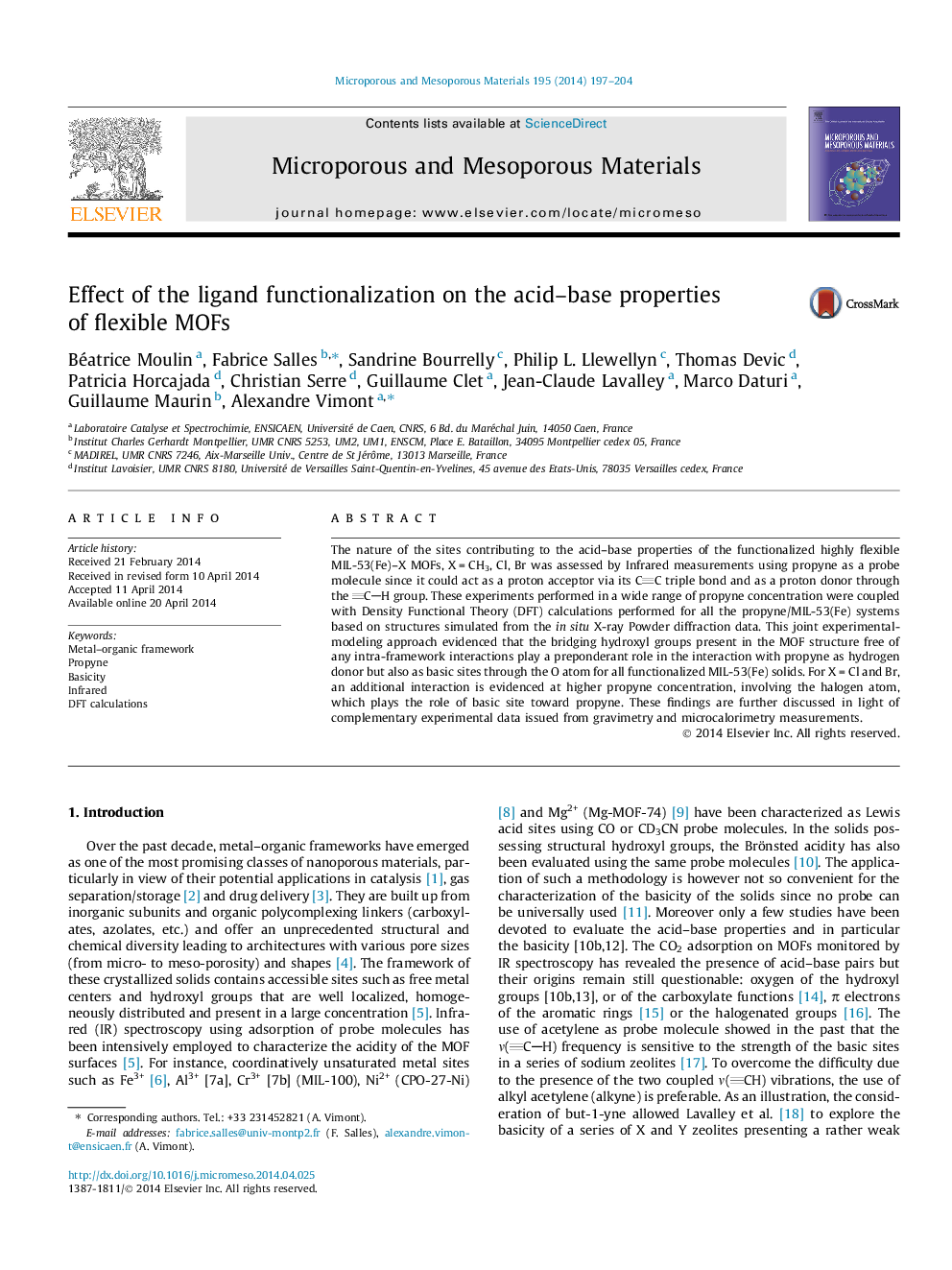| Article ID | Journal | Published Year | Pages | File Type |
|---|---|---|---|---|
| 73113 | Microporous and Mesoporous Materials | 2014 | 8 Pages |
•IR and modeling approaches for specifying the dual interaction of propyne in MIL-53.•Halogen atoms act as basic sites toward propyne in functionalized MOFs.•Free hydroxyls interact with propyne as hydrogen donors but also as basic sites.
The nature of the sites contributing to the acid–base properties of the functionalized highly flexible MIL-53(Fe)–X MOFs, X = CH3, Cl, Br was assessed by Infrared measurements using propyne as a probe molecule since it could act as a proton acceptor via its CC triple bond and as a proton donor through the CH group. These experiments performed in a wide range of propyne concentration were coupled with Density Functional Theory (DFT) calculations performed for all the propyne/MIL-53(Fe) systems based on structures simulated from the in situ X-ray Powder diffraction data. This joint experimental-modeling approach evidenced that the bridging hydroxyl groups present in the MOF structure free of any intra-framework interactions play a preponderant role in the interaction with propyne as hydrogen donor but also as basic sites through the O atom for all functionalized MIL-53(Fe) solids. For X = Cl and Br, an additional interaction is evidenced at higher propyne concentration, involving the halogen atom, which plays the role of basic site toward propyne. These findings are further discussed in light of complementary experimental data issued from gravimetry and microcalorimetry measurements.
Graphical abstractFigure optionsDownload full-size imageDownload as PowerPoint slide
